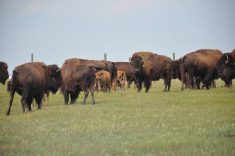DENVER, Colo. – Public concern over antibiotic resistance could affect the use of veterinary drugs and future development of new medicines.
Antimicrobial resistance has been found in intensive care units of hospitals but so far no connection has been made between human health and the use of these products in cattle, hogs and poultry.
“We spend a lot of time trying to refute some things that just aren’t so,” Mike Apley of Kansas State University said during the International Livestock Congress Jan. 11 in Denver.
Read Also

Canadian Food Inspection Agency extends chronic wasting disease control program consultation deadline
Date extended for consultation period of changes to CWD program
The Canadian Beef Cattle Research Council and Alberta Beef Producers are funding research to study the issue and preliminary results indicate that antimicrobial resistance is not common in beef cattle.
Researchers know that hundreds of resistant bacteria exist because the organisms are constantly mutating.
A 2010 review found that 354 bacterial species showed resistance to tetracycline used in animal and human medicine.
Mutations in bacteria happen all the time, regardless of antibiotic use. Drugs kill some of the germs and those with resistance multiply.
Legislation was introduced in the U.S. Congress in 2009 to restrict the use of medicated feed and water and prevent possible resistance connections. The American Veterinary Association opposes the legislation, saying a ban would increase animal disease and death.
Tom Shryrock of Elanco Animal Health said antibiotics are approved for performance and disease treatment such as pinkeye, foot rot, joint infections and respiratory conditions.
A ban on medicated feed would result in poor control of liver abscesses and a likely decline in growth performance.
On the extreme end, a ban could add an extra two months of feed to a steer’s finishing time, which could be expensive for feedlots considering corn is selling for more than $5 per bushel.















